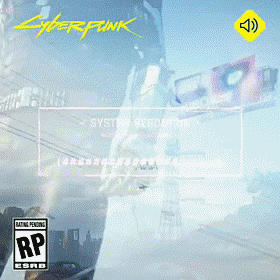Somebody forgot to set their alarm...
The Text I have chosen to adapt, for the Art and Design Unit is When The Sleeper Wakes (WTSW), by H. G. Wells. I chose this based on the texts descriptions of large edifices and gossamer suspension bridges. This really got my imagination going and I have quite a few ideas I want to explore.
When The Sleeper Wakes, H. G. Wells
His first impression was of overwhelming architecture. The place into which he looked was an aisle of Titanic buildings, curving spaciously in either direction. Overhead mighty cantilevers sprang together across the huge width of the place, and a tracery of translucent material shut out the sky. Gigantic globes of cool white light shamed the pale sunbeams that filtered down through the girders and wires. Here and there a gossamer suspension bridge dotted with foot passengers flung across the chasm and the air was webbed with slender cables. A cliff of edifice hung above him, he perceived as he glanced upward, and the opposite facade was grey and dim and broken by great archings, circular perforations, balconies, buttresses, turret projections, myriads of vast windows, and an intricate scheme of architectural relief. Athwart these ran inscriptions horizontally and obliquely in an unfamiliar lettering. Here and there close to the roof cables of a peculiar stoutness were fastened, and drooped in a steep curve to circular openings on the opposite side of the space, and even as Graham noted these a remote and tiny figure of a man clad in pale blue arrested his attention. This little figure was far overhead across the space beside the higher fastening of one of these festoons, hanging forward from a little ledge of masonry and handling some well-nigh invisible strings dependent from the line. Then suddenly, with a swoop that sent Graham’s heart into his mouth, this man had rushed down the curve and vanished through a round opening on the hither side of the way. Graham had been looking up as he came out upon the balcony, and the things he saw above and opposed to him had at first seized his attention to the exclusion of anything else. Then suddenly he discovered the roadway! It was not a roadway at all, as Graham understood such things, for in the nineteenth century the only roads and streets were beaten tracks of motionless earth, jostling rivulets of vehicles between narrow footways. But this roadway was three hundred feet across, and it moved; it moved, all save the middle, the lowest part. For a moment, the motion dazzled his mind. Then he understood.
Under the balcony this extraordinary roadway ran swiftly to Graham’s right, an endless flow rushing along as fast as a nineteenth-century express train, an endless platform of narrow transverse overlapping slats with little interspaces that permitted it to follow the curvatures of the street. Upon it were seats, and here and there little kiosks, but they swept by too swiftly for him to see what might be therein. From this nearest and swiftest platform a series of others descended to the centre of the space. Each moved to the right, each perceptibly slower than the one above it, but the difference in pace was small enough to permit anyone to step from any platform to the one adjacent, and so walk uninterruptedly from the swiftest to the motionless middle way. Beyond this middle way was another series of endless platforms rushing with varying pace to Graham’s left. And seated in crowds upon the two widest and swiftest platforms, or stepping from one to another down the steps, or swarming over the central space, was an innumerable and wonderfully diversified multitude of people.

Comments
Post a Comment